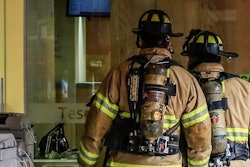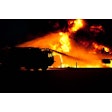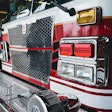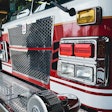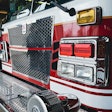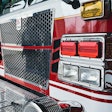
Grain handling facilities often produce a significant amount of dust during the loading, unloading and processing of grains. As dust accumulates over time, it becomes a potential fuel source for an explosion that can have catastrophic consequences.
A grain handling or processing facility may not be able to avoid dust during its operation, but it can manage it to reduce the likelihood of the worst-case scenario from happening.
“With many inherent hazards and risks in grain handling facilities, we can try to avoid creating dust clouds and ignition sources through safe work practices, good engineering design and maintenance,” said Jeramy Slaunwhite, chief technical officer – Explosion Safety with REMBE Inc. “Some risk of upset conditions or unforeseen failures will always exist. Managing dust layers in building and process areas with housekeeping and leak management is critical to preventing devastating secondary explosions.”
Analyzing dust conditions at your grain operation
The National Fire Protection Association (NFPA) suggests a Dust Hazard Analysis (DHA) be performed to assess the combustible properties of the dust being handled, identify where a dust cloud can occur in the process, and determine likely ignition sources. The DHA should evaluate the consequences of primary and secondary explosion scenarios.
“A critical part of a DHA is identifying explosion prevention and mitigation steps that should be taken to reduce the risk of an incident,” said David Grandaw, vice president, sales, with IEP Technologies. “Prevention should always be incorporated into the assessment first, so that all of the conditions needed for an explosion will not be present during normal operations.”
Since most of the ingredients for an explosion are always present, ignition control measures are critical for a safe plant operation. Typical ignition sources include bearing failure/overheating, electrostatic discharge, and mechanical failure of product or air-moving equipment.
Ignition prevention techniques commonly used are strategically placed magnetic separators, bearing temperature monitors, rub blocks and electrostatic bonding and grounding.
For grain handlers and processors, there are many critical decisions involved beyond the DHA in selecting dust explosion prevention, protection and mitigation equipment given the areas at risk, the methods of protection, relevant NFPA codes, other jurisdictional requirements, and the type of material processed.
Because conditions outside normal dust accumulation can lead to an explosion, NFPA 61 (Agricultural and Food Processing Facilities) and NFPA 652 (Fundamentals of Combustible Dust) require the use of explosion mitigation techniques for equipment subjected to an explosion threat.
Explosion mitigation techniques
Explosion venting is one of the most widely used methods for mitigating dust explosions. It requires an explosion relief vent installed on the wall of a piece of process equipment, such as bucket elevators, silos and dust collectors. Rupture-style explosion vents feature a membrane constructed of a material weaker than the process equipment wall.
“By venting the explosion, equipment failure due to overpressure is prevented,” explained Slaunwhite. “Explosion vents are an engineered weak point designed to open at a predefined pressure setpoint and can be selected to be compatible with most process conditions.”
During a dust explosion's beginning stage, the vent ruptures and directs the explosion's overpressure, flame, burnt and unburnt material, and other combustion byproducts away from the vessel to a safe location.
“The explosion relief vent sizing must be designed to ensure that the explosion's pressure rise doesn't exceed the vessel's pressure shock resistance,” said Grandaw. “It is also critical the flame ejection path for an explosion vent is directed to an area where workers, equipment and the building structure are not in harm’s way from the ejecting fireball.”
Flameless venting protects indoor equipment from dust explosions by combining an explosion relief vent with a mesh trap that arrests flame and retains particles.
“Flameless venting is best for equipment located in occupied or interior areas that cannot be safely vented,” said Slaunwhite.
Like an explosion relief vent, the flameless vent's sealing device (either a spring-loaded disc or a rupture panel) opens during a deflagration -- a rapid combustion or burning process that occurs at a subsonic speed.
“The deflagration's overpressure, flame and material discharge through the mesh trap, which absorbs the heat from the flame and prevents the flame from discharging into the surrounding area,” said Grandaw.
Explosion suppression systems are often installed in applications where it is not possible to safely vent an explosion away from process equipment. The system detects a dust explosion immediately after ignition, using either static or rate-of-rise pressure detection, and discharges a chemical extinguishing agent into the developing fireball inside the equipment to extinguish the deflagration before a destructive overpressure develops.
Explosion isolation devices help ensure if there's a blast in a container, it doesn't spread through a connection like a duct, chute or conveyor to other machines, where it might lead to more explosions.
“An explosion will travel through any open pathway,” said Slaunwhite. “It’s important to provide explosion isolation along with protection to prevent traveling, chain-reaction explosions.”
An isolation device can be active or passive, explained Grandaw. “An active device has detection components, including explosion pressure and/or flame detectors, and a control unit,” he said. “The detectors sense explosion pressure or a flame and send a signal to the controls to rapidly deploy the device. These active explosion isolation devices are either chemical or mechanical.”
A chemical isolation device works by rapidly discharging a chemical extinguishing agent, such as sodium bicarbonate, into connecting ductwork to reduce the spread of flames. A mechanical isolation option includes a high-speed gate valve.
Passive explosion isolation uses a flap-style or float valve and is self-actuated by the advancing deflagration pressure wave. “Passive isolation is typically used to isolate dust-handling equipment with relatively low dust loads,” said Grandaw.
Spark detection systems do not wait for an actual fire or dust explosion to erupt. Instead, they detect and extinguish the threat before any incident occurs, allowing users to continue operations safely without shutting down.
For example, the Fagus GreCon spark detection system prevents hazardous circumstances by early detection and elimination of the ignition source. This is accomplished by mounting infrared detectors to ducts that pneumatically transport grain or other material from one piece of equipment to another. The equipment could be a hammermill, dust collector, process oven or other equipment.
The infrared detectors detect sparks, embers or other heat sources that are small. The control panel is notified and countermeasures are triggered (usually a water extinguishing system, but this could also be a diversion of materials) and activated in milliseconds to eliminate the sparks, embers or other heat sources. This reduces the threat of fires and explosions without stopping production. The key is to identify heat sources when they are small and control them before a dangerous situation occurs, said Eric Peterson, CEO – North American Operations with Fagus GreCon.
“Our spark systems are designed to identify and eliminate sparks before they become fires or explosions,” said Peterson. “We detect sparks, hot embers, burning nests and elevated temperatures. Our detector then communicates with our console to trigger counter measures – extinguishment, abort or diverter gates.”
Which mitigation technique is best for your grain handling facility?
Each grain handling and processing facility is unique, so the best way to protect against explosions depends on the specific situation.
- For new applications on process equipment located outside, explosion venting, with its low initial coast and minimum maintenance requirements, is often preferred to provide an escaping fireball direction to a safe area.
- For existing process equipment that is not equipped with a proper venting design, it may be more expensive to retrofit standard vents than to use explosion suppression due to installation costs. Adding explosion vents to a tall bucket elevator is a good example.
- Flameless venting is substantially more expensive than standard venting but is a viable option for inside process equipment. As flameless vents are less efficient than standard venting, more geometric vent area is usually necessary. Unlike active protection systems, flameless venting does not require frequent trained technician maintenance and service contracts.
- Explosion suppression is usually a higher initial cost and higher cost of ownership due to the recommended inspections needed. Active protection, such as a chemical explosion suppression system, has the advantage of being able to handle a complex system of branch connections with less invasive installation.
The cost of not protecting your operation
“Explosion protection systems often have the reputation of being expensive,” said Slaunwhite. “The design, development and certification of high performance, safety systems require significant investment to ensure reliability under instantaneous, demanding conditions.”
Alternatively, the costs of equipment failure or facility damage from an unprotected explosion can largely outweigh protection equipment costs, he added. “Personnel injuries or fatalities are beyond dollar value,” he said. “Fines, lawsuits and compensations have also historically been significant in these cases.”
The specific costs of protection equipment can vary widely based on the size and complexity of the protected process, process conditions, installation challenges and protection equipment type.
“Explosion vents can be as little as a few hundred dollars per vent panel, but penetrations and frames also must be made,” said Grandaw. “For applications requiring many explosion vents, such as for a bucket elevator, the installation costs can far exceed the cost of the vents themselves.”
Flameless vents are more expensive than standard vents, and due to the efficiency factor, will often require more vents and vent penetrations, added Grandaw.
“Flameless vents can run from a few thousand dollars to more than $10,000 per unit, depending on the style and supplier,” he explained. “Explosion suppression and isolation systems can cost anywhere from $20,000 to much higher levels, depending on the size and complexity of the process to be protected. Passive isolation valves, specifically the flap-style valves, can run from approximately $2,000 to more than $8,000, depending on the size and supplier.”
What’s next?
Explosion prevention and protection devices have evolved over the years, and there are some new innovations on the horizon, said sources. The use of rate-of-pressure rise detection as a false alarm deterrent for active explosion protection is becoming more common for grain industry applications.
“New extinguishers are coming into the market that are electromechanical, instead of pyrotechnically activated,” said Grandaw. “This makes for safer handling and, in many cases, a lower cost of ownership.” Peterson said his company’s new Intelligent Extinguishing Module (IEM) is designed to reliably extinguish sparks while also monitoring early wear recognition. The system has sensors integrated into the extinguishing module to detect the wear of the nozzles while also monitoring low-pressure flow to the nozzles.
“This product helps increase plant and system availability with efficient maintenance planning to reduce downtime,” he said. “In addition to monitoring flow to the nozzle, the system will also detect and recognize when microleaks occur, which will allow for repair of defective nozzles before they become a problem.”
Preventing dust explosions at grain handling facilities is an ongoing process that involves a combination of engineering controls, administrative practices and a commitment to safety culture. Each facility has unique challenges so tailor prevention measures to the specific risks and conditions in your facility.






